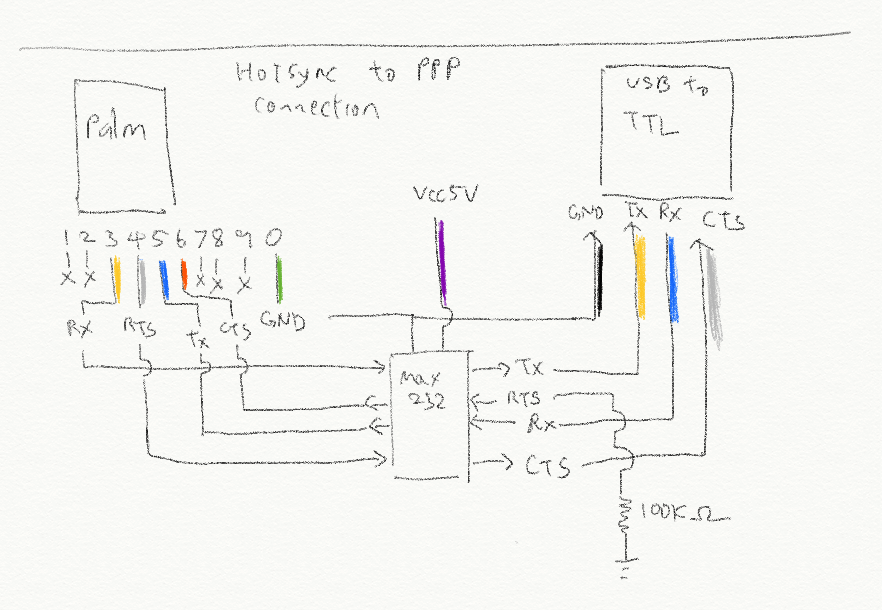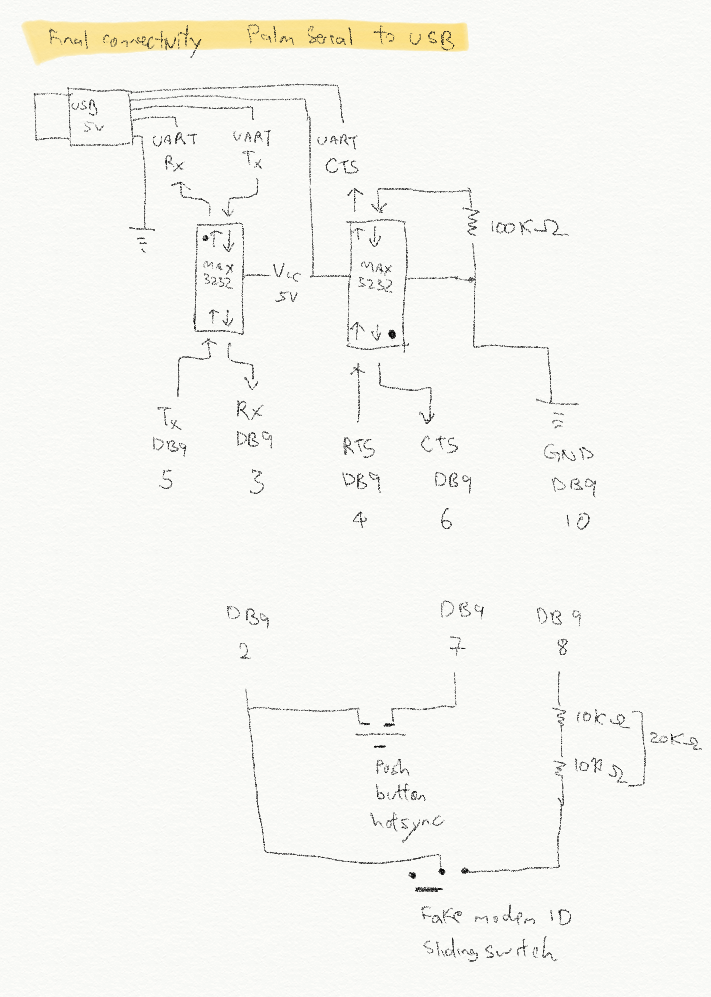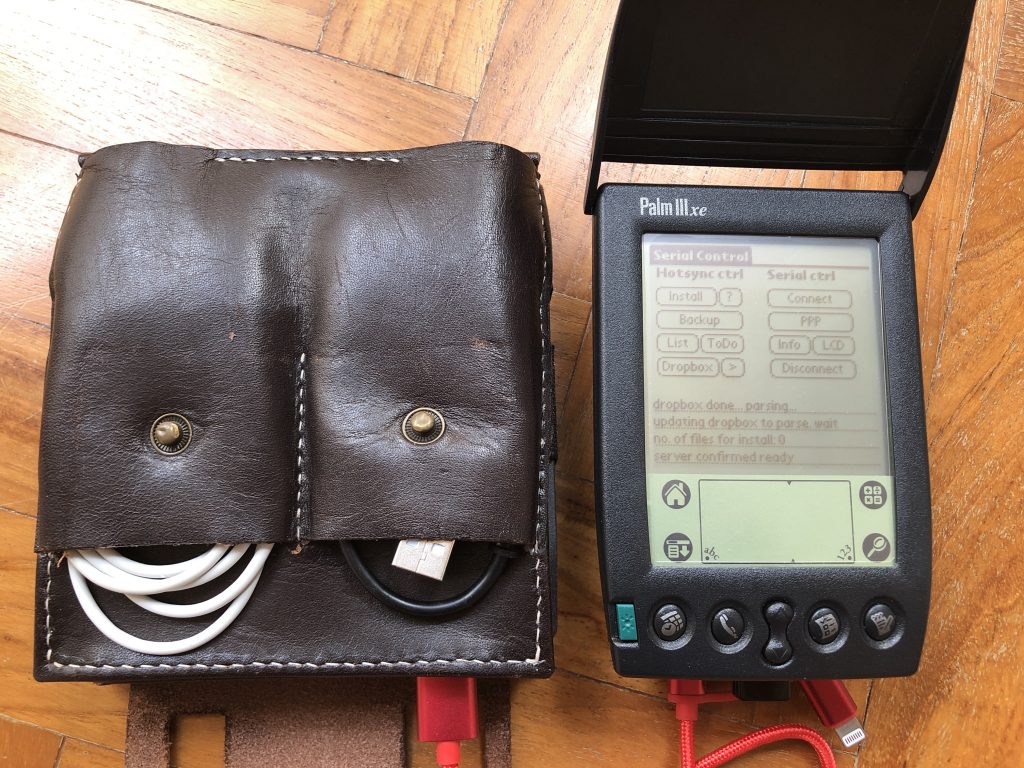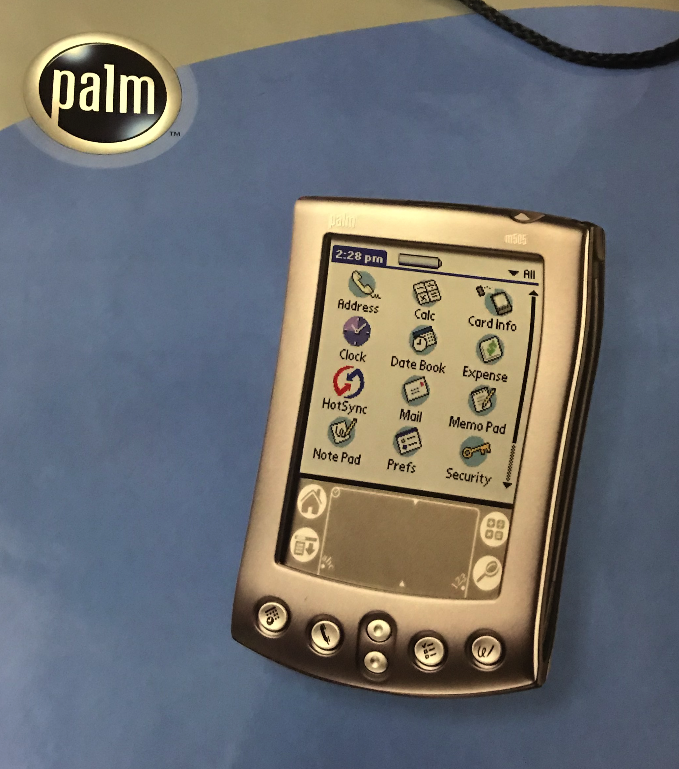Getting past 19200bps
It really took me a long while before I wrote the post. Partly coz I was really tired after all the mods done to my Palm, but also that after I completed it… I forgot. 🙂
From Part 2 when I last left off, I was really having issues trying to get the Palm to communicate with my Linux system at the full speed. 19200bps was the fastest I could go but I just couldn’t go 115200bps.
Getting all the connections right
After quite a few tries, I finally realised that I not only had to get the Tx/Rx lines correct, which addresses the basics of serial communications in today’s modern systems, but also the traditional lines which is RTS and CTS. My resulting connection diagram is shown below. Once that is sired up correctly, I was able to get connected via the DB9 serial from the Palm to a TTL UART with no issues!


Once the serial port is setup, there isn’t really much else to do on the hardware front. Once it was possible to get to TTL, converting that to USB or directly connection a TTL to a Raspberry Pi using serial is relatively straight forward. Getting all other pieces of communication to work is simply using older instructions of getting the network connection to the Palm using PPP on linux and/or getting Network Hotsync to work.
In addition, this effectively lays the ground of being able to communicate from the Palm to a Raspberry Pi using simple commands sent over a serial port, and then having a simple serial port daemon listening on the Raspberry to execute the received instructions.


Conclusions
Its been a long while since i last completed this set of hardware “surgery” on my PalmIIIxe. i’m really happy that it works, as i now have the software to get my iCal, Contacts all in this traditional handy device. I also have my own USB sync cable for this and have been able to do things like Network Hotsync etc using pilot-link.
I also learnt about a bunch of things on serial connections, TTL and serial communication. Of course, it also brings me back to Palm programming which was really quite a trip down memory lane. I ams also really happy to have this modification not destroy or disfigure my Palm too much. I now have a 10 pin “expansion port” on the back of my unit, but otherwise, everything still works great. i could still install my old games and utilities into it. It also still functions as my desk calculator. It is a little dated, but i could still install Palm apps like games and utilities to make use of it.
The most disappointing coming out of all this effort was that i couldn’t find the right software to be able to receive email on my palm. Writing an email client is out of my league and applications such as Eudora Internet Suite is severely out of date and i just can’t seem to use that successfully anymore; and i didn’t really want to change the configurations of my email service too much.
In conclusion? Modify your PalmIII if you want to make use of it somewhat. Using AAA batteries is great, and i’m talking about battery life that goes for weeks instead of just a day. Don’t expect it to be transformed into a daily companion now though as you will be challenged to find the software or hardware to be able support all the modern goodies we are now so used to such as Wifi. But having no Internet on the device could also be good…
Its nice to get away from modern tech and connectivity sometimes, and return to simpler times.